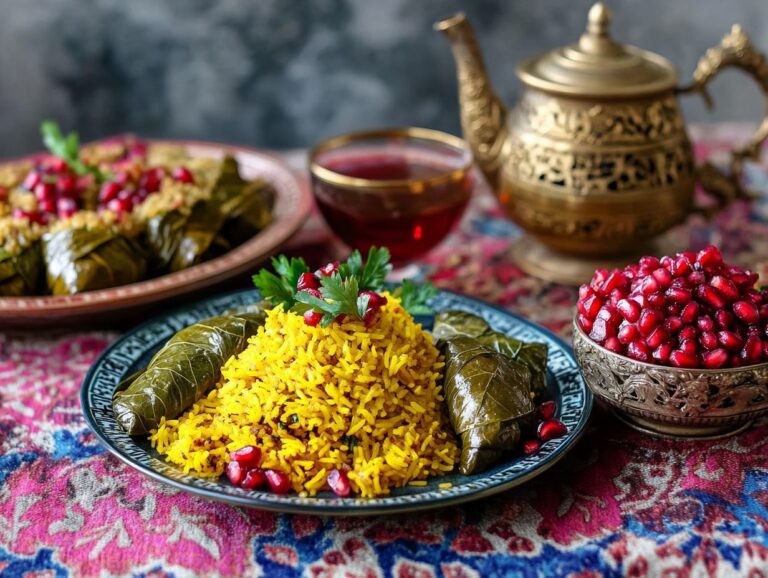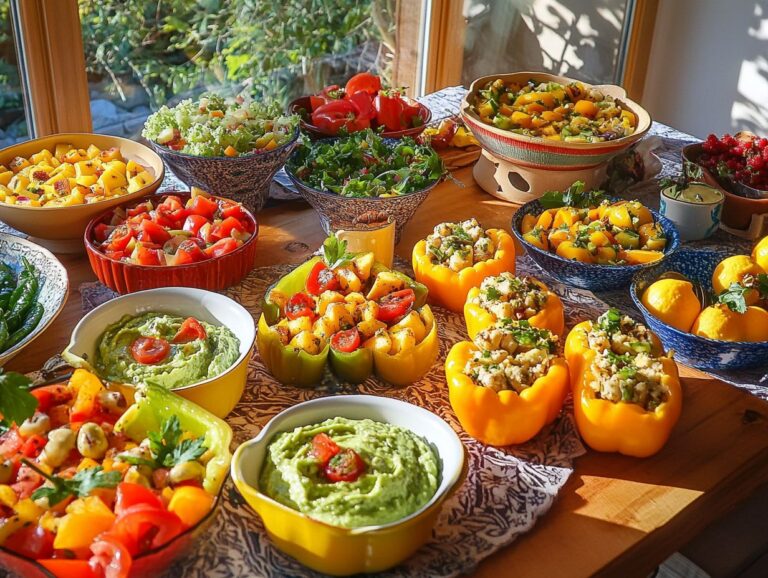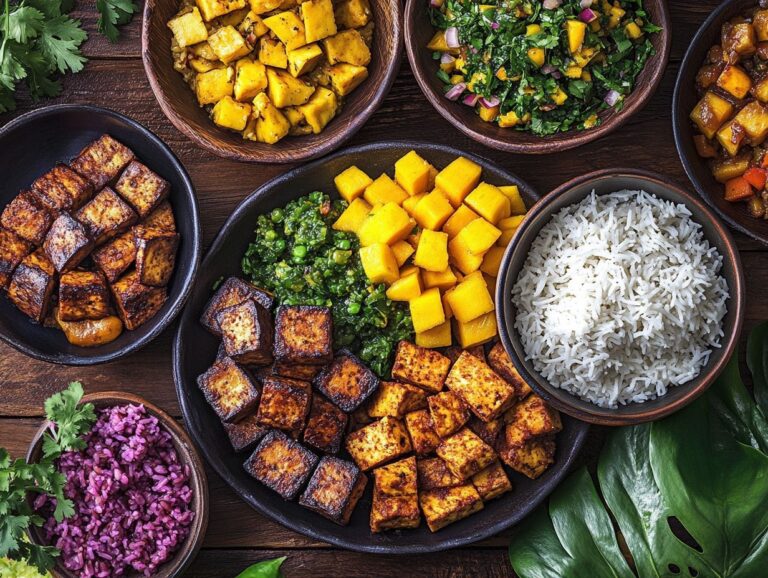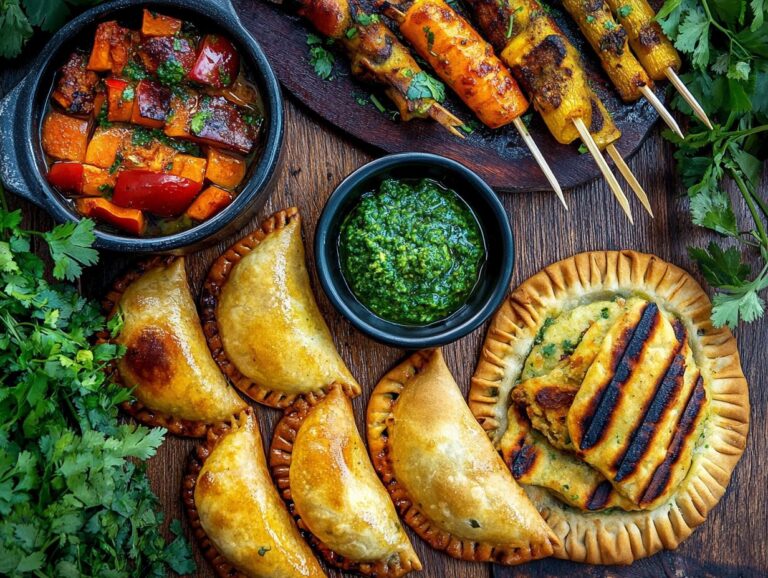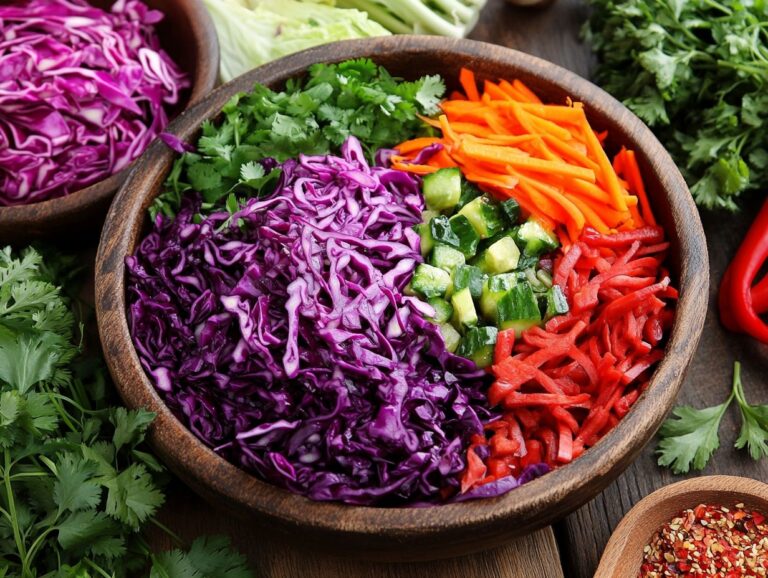High-protein, low-calorie vegan recipes are an excellent way to meet your fitness goals while enjoying delicious meals. Individuals following a plant-based diet may find it challenging to meet their protein needs without exceeding their calorie intake. These recipes offer essential nutrients without adding excess calories. In this article, we will explore the benefits of high-protein, low-calorie vegan recipes, introduce top plant-based protein sources, and provide nutrient-dense meal ideas for breakfast, lunch, dinner, and snacks. Additionally, we will share practical tips on how to incorporate these recipes into your daily routine, making healthy eating both satisfying and achievable.
Benefits of High-Protein, Low-Calorie Vegan Recipes

High-protein, low-calorie vegan recipes offer numerous benefits that can help individuals achieve their fitness and health goals while promoting a sustainable eating pattern. The advantages of incorporating these recipes into one’s diet include:
- Enhanced Athletic Nutrition: High-protein, low-calorie vegan recipes enable athletes and active individuals to meet their protein and calorie requirements without excess fat and sugar. These recipes feature nutrient-dense foods such as legumes, quinoa, and tofu, which provide essential building blocks for muscle recovery and growth.
- Weight Loss Support: These recipes can assist with weight loss and weight management by helping to maintain an ideal energy balance, controlling hunger, and improving metabolic parameters.
- Muscle Building Support: When combined with a resistance or strength training program, high-protein, low-calorie vegan recipes can promote muscle building.
- Adherence to Dietary Guidelines: These recipes align with dietary guidelines by emphasizing whole foods and clean eating principles. They contain ample servings of vegetables and fruits, ensuring a variety of nutrients that support weight loss and muscle-building goals.
- Support for the Vegan Lifestyle: High-protein, low-calorie vegan recipes are essential for those following a vegan lifestyle, as they promote healthy eating without the use of animal products, reflecting a core principle of veganism.
How it Supports Fitness Goals
High-protein, low-calorie vegan recipes are essential for maintaining a healthy fitness regimen, as they ensure individuals receive sufficient protein while keeping caloric intake low—both of which are necessary for effective weight loss and muscle building.
These meals offer dietary fiber from legumes and whole grains, promoting satiety and supporting digestion and overall health. Thoughtful meal planning using nutrient-dense ingredients helps achieve optimal energy balance, ensuring the body receives the nutrients needed to perform at its best during workouts.
- For instance, a salad featuring chickpeas as a protein source can be made both colorful and nutritious by incorporating a variety of vegetables.
- Another example is a quinoa bowl topped with black beans and steamed broccoli, which serves as a satisfying option.
These are just two of the countless high-protein, low-calorie vegan recipes available, each providing essential amino acids and a feeling of fullness.
Additionally, these dishes can be prepared in advance, making them convenient for busy weeks and reducing the temptation to resort to unhealthy snacks when low on calories and nutrients.
By balancing protein consumption with workout schedules, you can customize these recipes to align with your specific fitness goals, whether you aim to lose weight or build muscle.
Sources of Plant-Based Protein
Plant-based protein sources include legumes such as chickpeas, lentils, and black beans, whole grains like quinoa, and foods like tofu, tempeh, edamame, and spirulina, which are beneficial for muscle building, especially for those following a vegan lifestyle or aiming to enhance their fitness and wellness journey.
These high-protein plant-based foods not only increase protein levels in the body but also provide essential vitamins, minerals, and dietary fiber that contribute to a healthy lifestyle. Incorporating these foods into meal ideas and recipes can aid in achieving specific fitness goals.
Additionally, incorporating protein-rich plant-based foods, including nuts, seeds, and nutritional yeast, into every meal helps to ensure a varied and balanced diet.
Top Protein-Rich Vegan Foods
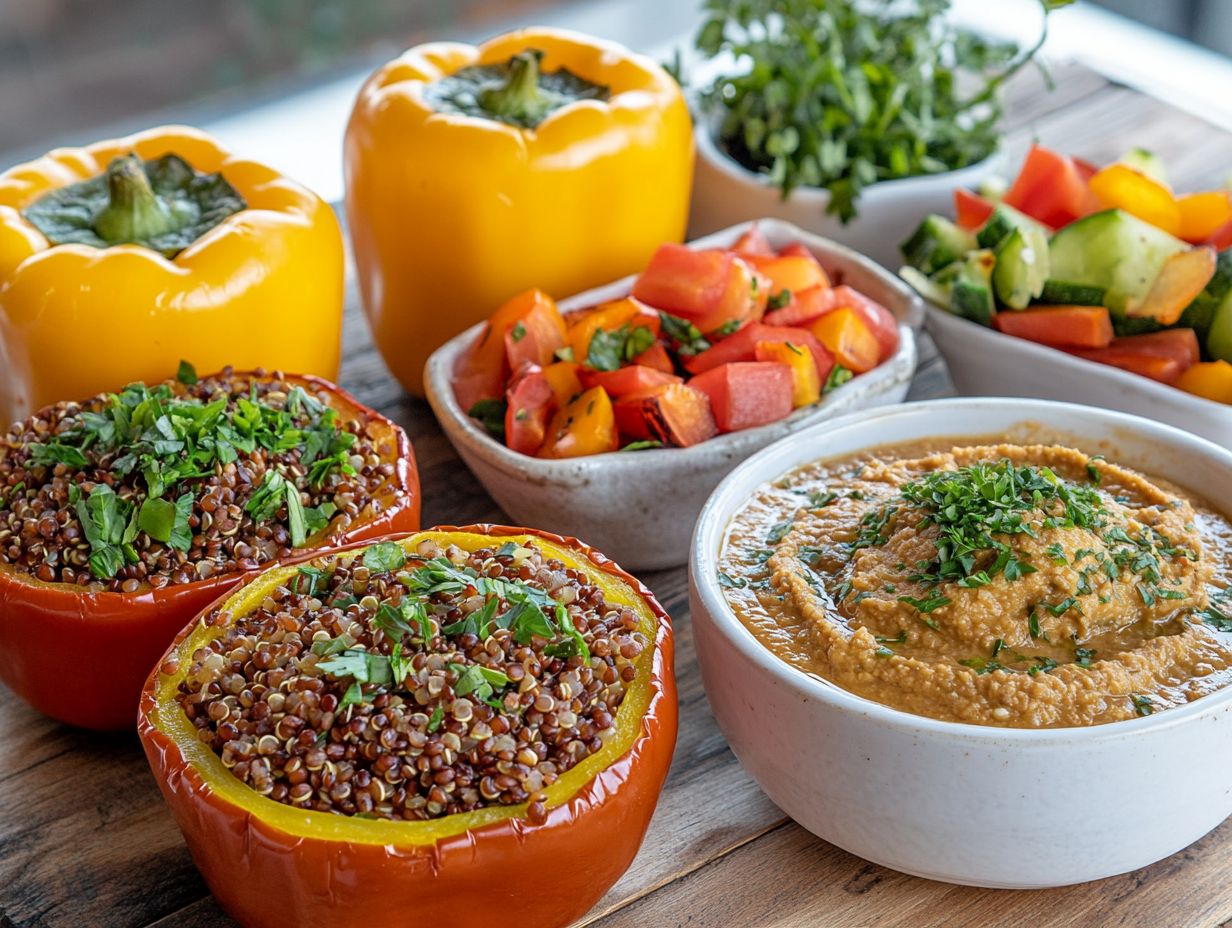
Here is a list of the top protein-rich vegan foods, which are excellent sources of high protein content. Legumes, whole grains, and plant-based protein options are some of the best dietary sources of protein. They are not only easy to incorporate into delicious and filling vegan meals but are also typically rich in essential vitamins, minerals, and dietary fiber, contributing to overall well-being.
Examples of Protein-Rich Vegan Foods:
- Legumes: Lentils, Lima Beans, Chickpeas, Pinto Beans, Black Beans, Green Peas
- Whole Grains: Buckwheat, Quinoa, Oats, Brown Rice
- Plant-Based Protein Options: Nutritional Yeast, Tofu, Tempeh
Proteins are composed of chains of amino acids, which are crucial for human health. Amino acids can be categorized into essential amino acids (EAAs) and non-essential amino acids (NEAAs). While our bodies can synthesize NEAAs, we must obtain EAAs from our diet. Out of the 20 amino acids required, 9 are classified as EAAs. To ensure we receive all 9 EAAs—histidine, isoleucine, leucine, lysine, methionine, phenylalanine, threonine, tryptophan, and valine—we need to consume a variety of protein sources.
Although animal protein sources are considered “complete” as they contain all EAAs, many plant sources do not. However, the aforementioned plant-based proteins are nutritious and, when combined with other non-protein foods, can provide complete amino acid profiles. By creatively combining these protein-rich vegan foods, we can develop meals that supply all 9 EAAs necessary for human health. Consider using innovative food swaps or portion control to meet calorie counting needs without sacrificing taste.
Dishes Featuring Protein-Rich Vegan Foods:
Here are some examples of how to include protein-rich vegan foods in meals that are high in protein and other nutrients, perfect for workout meals or energy-boosting snacks:
- Lentils and Quinoa as a Base: A protein-rich vegan dish can be created using quinoa and lentils, which provide healthy carbohydrates, vitamins, and are a basis for delicious meal prep ideas. Quinoa, a grain-like seed more akin to a vegetable, contains protein and complex carbs essential for muscle growth and energy. One cup of cooked quinoa provides 14.1 grams of protein.
- Chickpeas for Crunch and Protein: Roasted chickpeas are an excellent addition to salads or can be enjoyed as a healthy snack, offering both protein and fiber. A cup of cooked chickpeas contains 14.5 grams of protein and 12.5 grams of fiber.
- Tofu in Stir-Fries and Curries: Tofu is a versatile protein-rich vegan option that can be added to many dishes. Made by coagulating soy milk and pressing the curds into soft white blocks, cooked tofu provides 25.1 grams of protein per cup.
- Tempeh in Sandwiches: Tempeh, created from fermented soybeans, serves as a nutritious meat substitute and has a higher protein content than tofu. However, it is denser and chewier in texture, offering 30 grams of protein per cup of cooked tempeh.
- Nuts and Seeds as Toppings and Snacks: Nuts and seeds are high in protein and healthy fats, providing a delightful crunch and flavor to salads. For instance, almonds contain 6 grams of protein and 3.5 grams of fiber per 1-ounce serving.
Incorporating these protein-rich vegan foods into your diet can help ensure you meet your nutritional needs while enjoying a variety of delicious meals. Access online resources or cooking blogs for additional recipe variations, and connect with community support to share culinary skills.
Low-Calorie Vegan Recipes for Breakfast
Low-calorie vegan breakfast recipes can help individuals begin their day positively while embracing a healthier lifestyle, providing essential nutrients without excessive calorie counts. These recipes often include superfoods like spirulina and energy-boosting ingredients that enhance vitality.
Nutritionally dense meal ideas include protein smoothies made with spinach, nut butter, and plant-based protein powder, as well as overnight oats featuring quinoa, nuts, and chia seeds. For a balanced low-carb option, consider incorporating avocado or energy bars made from dates and seeds.
These breakfast options not only provide energy but also include healthy fats and fiber, promoting satiety and contributing to a well-balanced diet. Incorporating dairy alternatives, such as almond or soy milk, can cater to diverse dietary restrictions, including gluten-free or soy-free needs.
By utilizing seasonal produce, exploring various cooking methods such as grilling, steaming, or baking, and incorporating different ingredients, a diverse array of breakfast options can be created. These techniques highlight the flavor profiles of the ingredients, providing a satisfying culinary experience.
Nutrient-Dense Meal Ideas
Nutrient-dense meal ideas in low-calorie vegan recipes can be created by incorporating a variety of whole foods and cooking techniques, such as baking or steaming, that preserve the natural vitamins and minerals of the ingredients. Meals can be made more nutritious by including large amounts of vegetables, such as broccoli and spinach, and by combining legumes like chickpeas and edamame with whole grains. Adding tofu, tempeh, or black beans can further boost the vegan protein content.
The use of herbs and spices not only enhances flavor profiles but also offers health benefits due to their antioxidant properties. Experimenting with portion control and macronutrients ensures each meal supports your fitness goals while tasting delicious. By embracing clean eating and sustainable practices, you can prepare meals that are both delicious and beneficial for your health. Meal planning and prep time considerations can help maintain affordability and efficiency.
One excellent example of a nutrient-dense low-calorie meal is a quinoa salad with roasted sweet potatoes and chickpeas. This flavor combination, enhanced with a touch of vegan cheese, makes for a delightful dish. This dish is not only flavorful but also packed with nutrients. To prepare it:
- Boil the quinoa.
- Roast cubed sweet potatoes with a sprinkle of cumin and paprika for added warmth.
- Finally, mix in chopped parsley, a squeeze of lemon juice, and a sprinkle of nutritional yeast to achieve a fresh and vibrant flavor.
Another great option is a stir-fry featuring seasonal vegetables, such as bell peppers and snap peas, along with tofu or tempeh as a rich source of protein. The addition of ginger and garlic enhances the dish’s flavor while providing numerous health benefits, all while keeping the calorie count low.
High-Protein Vegan Lunch and Dinner Recipes
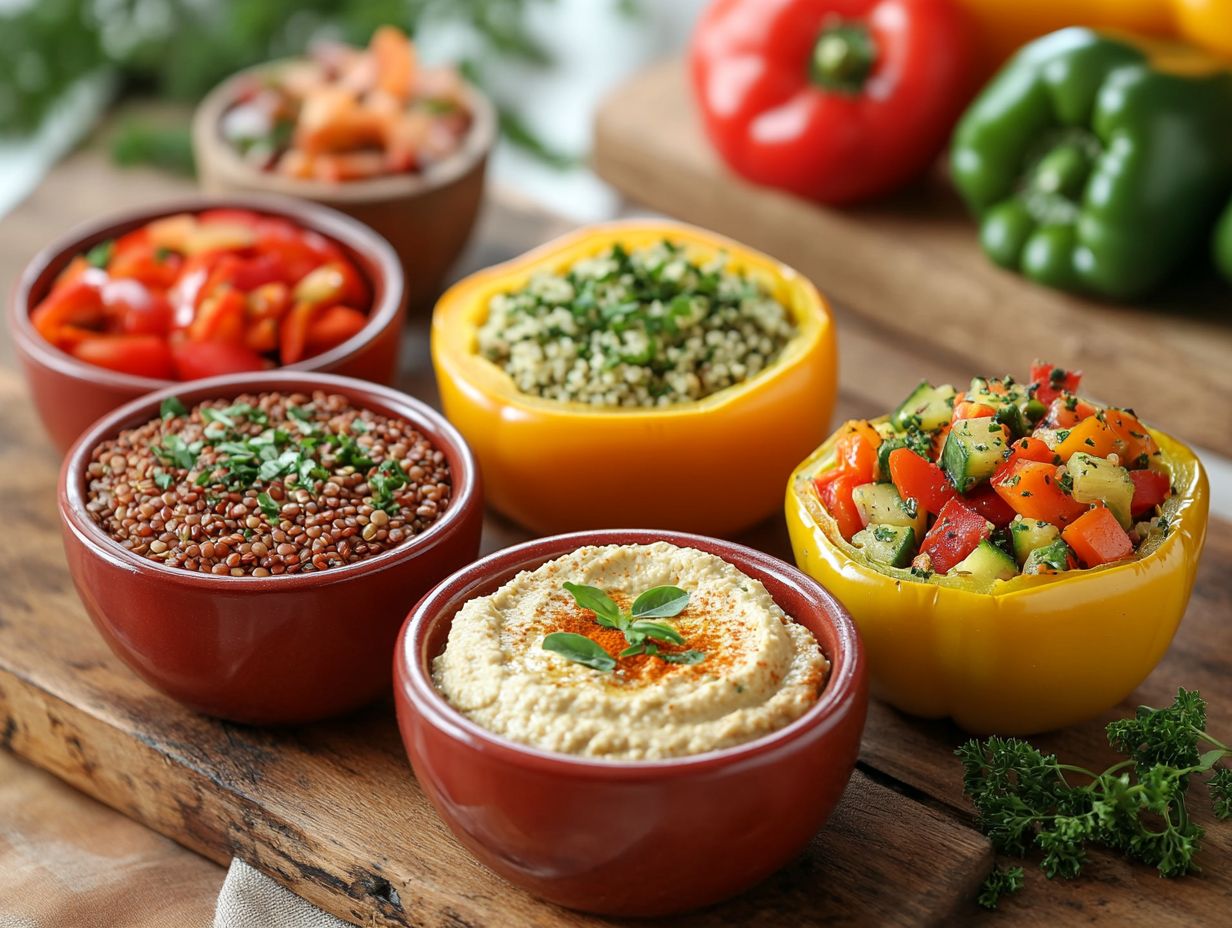
High-protein vegan lunch and dinner recipes can be both simple and delicious, offering a wide variety of options to accommodate different tastes and dietary restrictions.
By incorporating high-protein and nutrient-dense ingredients such as tempeh, lentils, chickpeas, and black beans, these recipes can help you boost your protein intake while also creating healthy meals that support your fitness and weight loss goals.
They are excellent choices for meal prep, ensuring easy access to nutritious meals throughout the week. When preparing high-protein vegan lunch and dinner recipes, you can focus on enhancing flavor complexity with spices and herbs and employ various cooking techniques, such as grilling, steaming, and baking, to elevate the taste of simple ingredients.
The following collection of recipes includes a mix of one-pot meals, stir-fries, and salads, each providing delicious flavors, high protein content, and the advantages of meal prep with a focus on plant-based and whole foods.
Simple and Satisfying Options
High-protein vegan meal options that are simple and satisfying are perfect for those looking for nutritious yet easy-to-prepare dishes for lunch and dinner. These meals, including plant-based wraps and protein pancake options, are well-suited for a busy lifestyle, enabling individuals to achieve their health goals without sacrificing flavor or time.
For example, a quinoa salad with roasted vegetables like seasonal ingredients not only delivers a substantial protein boost but also offers a rich array of vitamins and minerals. Likewise, dishes such as lentil soup or chickpea curry require minimal cooking skills and can be made in large quantities, making them ideal for meal prepping and supporting healthy eating habits.
By dedicating just a few hours each week to prepare these nutritious recipes in advance, anyone can simplify their dining experience, ensuring they enjoy wholesome meals that enhance both their well-being and culinary satisfaction while adhering to a clean eating lifestyle.
Snack Ideas for High-Protein, Low-Calorie Vegan Diet
Snack ideas for a high-protein, low-calorie vegan diet can help keep you satisfied between meals while supporting your overall health and fitness goals.
Incorporating vegan snacks such as healthy protein bars made from nuts and seeds, or energy-boosting options like roasted chickpeas and spirulina energy bars, allows individuals to obtain essential nutrients without consuming excessive calories.
It’s important to be mindful of portion sizes and macronutrients to ensure that these snacks meet dietary needs and contribute to maintaining daily energy balance.
By getting creative with snack time, people can enjoy delicious options, such as nutrient-dense energy cookies and protein smoothie bowls, that satisfy their cravings while fulfilling their nutritional requirements.
Healthy and Filling Snacks
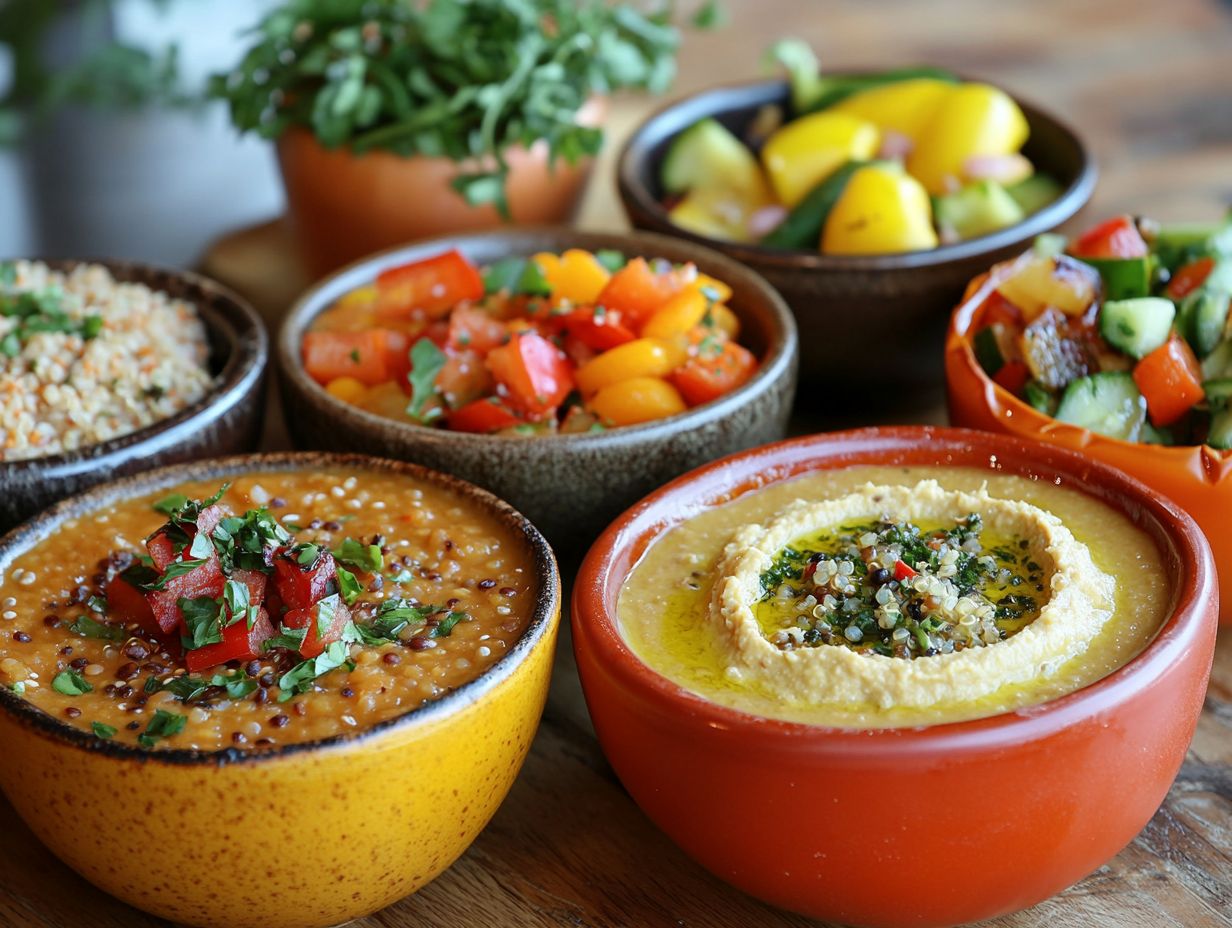
Healthy, filling snacks are essential components of a balanced diet, especially for those following a high-protein, low-calorie vegan lifestyle. Options like hummus with vegetable sticks or nut butter on whole-grain toast provide plant-based protein and essential dietary fiber, helping to keep you fuller for longer.
Staying mindful of hydration is also crucial, as it complements dietary habits and overall well-being. Quick, nutritious meals and snacks can easily be integrated into your daily routine, ensuring you remain healthy and energized.
Roasted chickpeas are an excellent example of a healthy and filling snack. They are crunchy, flavorful, and rich in protein, making them a great alternative to unhealthy snacks. To prepare them, simply mix cooked chickpeas with olive oil and your favorite spices, then roast until crispy.
Another fantastic option is a smoothie bowl made with protein powder, spinach, and a variety of fruits. This bowl offers antioxidants and amino acids, which not only help maintain muscle health but also deliver a range of nutrients that support overall well-being.
Incorporating these smart snack choices into your daily meals can enhance your energy levels and better control hunger.
Tips for Incorporating High-Protein, Low-Calorie Vegan Recipes into Your Diet
High-protein, low-calorie vegan recipes can be easily incorporated into an individual’s diet to enhance their overall health and support their fitness journeys.
Effective meal planning and food preparation can help ensure these recipes are prepared regularly and are convenient to consume throughout the day, particularly for those with dietary restrictions, such as gluten-free or soy-free needs.
Encouraging culinary creativity by experimenting with different flavors and protein sources can lead to a more diverse and enjoyable eating experience.
Establishing a weekly meal prep schedule can streamline the process, saving time and ensuring that individuals always have the meals they need readily available.
Meal Planning and Preparation Strategies
Meal planning and preparation strategies are essential for incorporating high-protein, low-calorie vegan recipes into your daily diet. Effective meal planning ensures that you meet your protein intake from diverse plant-based protein sources while controlling portion sizes and adhering to dietary guidelines.
Keeping a food journal allows you to track your food consumption and identify areas for improvement, ultimately leading to healthier eating habits. Additionally, having the right kitchen tools, such as measuring cups and a high-quality blender, simplifies the cooking process.
Here are some helpful suggestions:
- Batch cook grains, legumes, and seasonal vegetables on the weekends to create a base for quick meals throughout the week.
- Invest in a high-quality blender for making smoothies and sauces, including green smoothies with avocado and spirulina. An Instant Pot or pressure cooker can also help you prepare beans and grains more quickly.
- Use a good set of measuring cups and spoons to ensure accurate portion sizes, which can help you manage calorie intake while maintaining diverse flavor combinations and satisfying taste.
- Stock a variety of spices and herbs to transform simple ingredients into delicious, high-protein meals with diverse flavor profiles.

